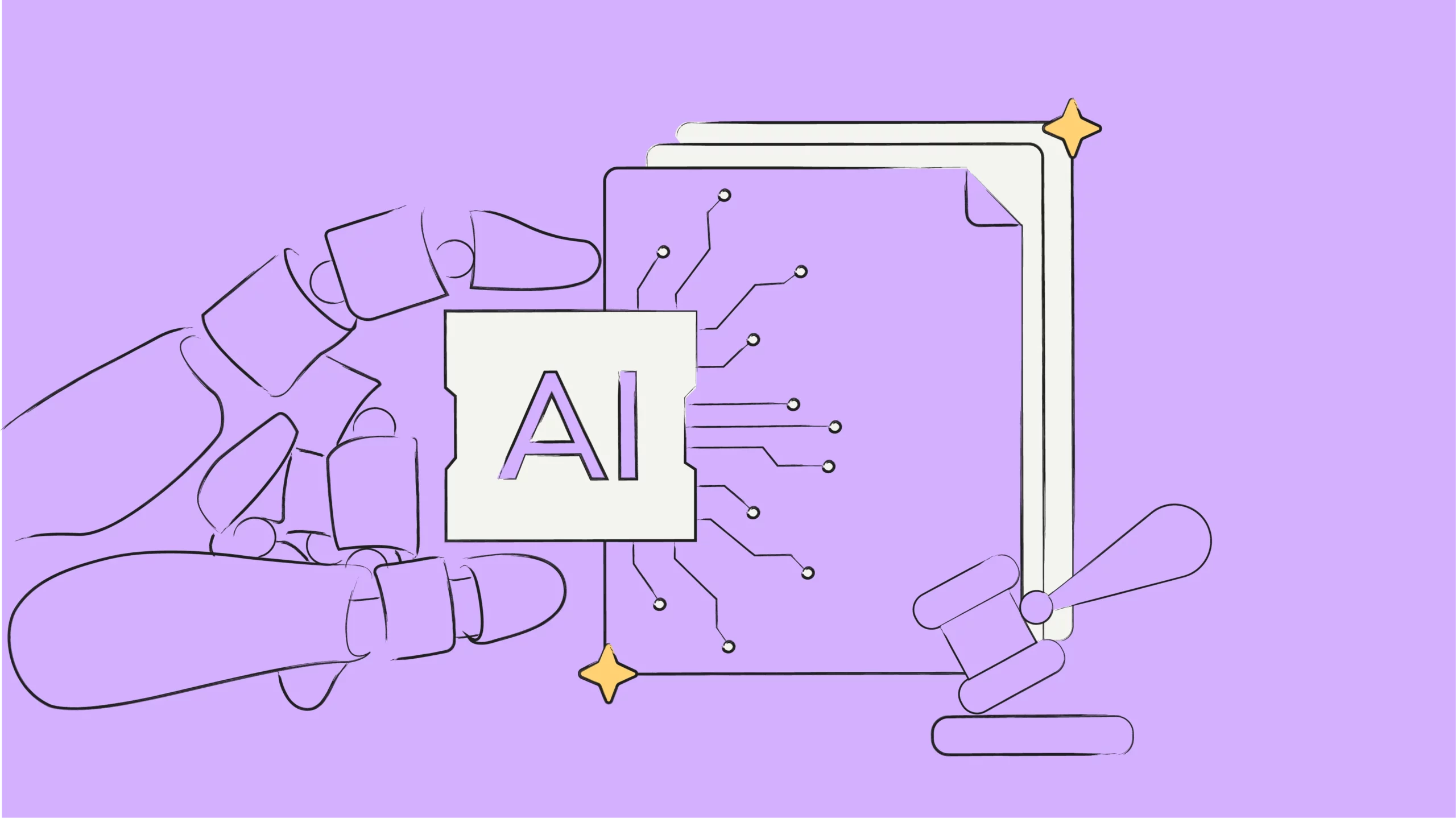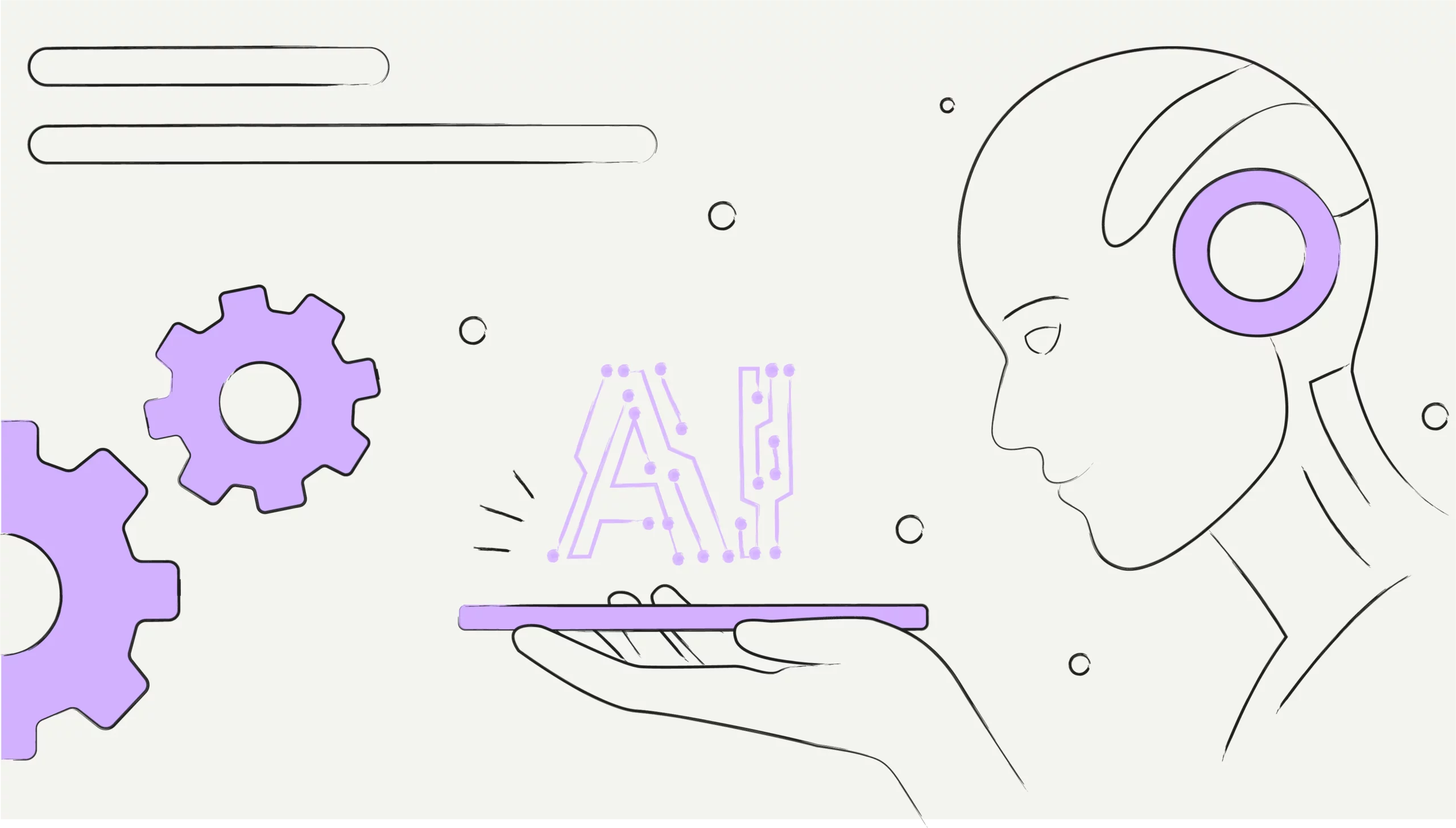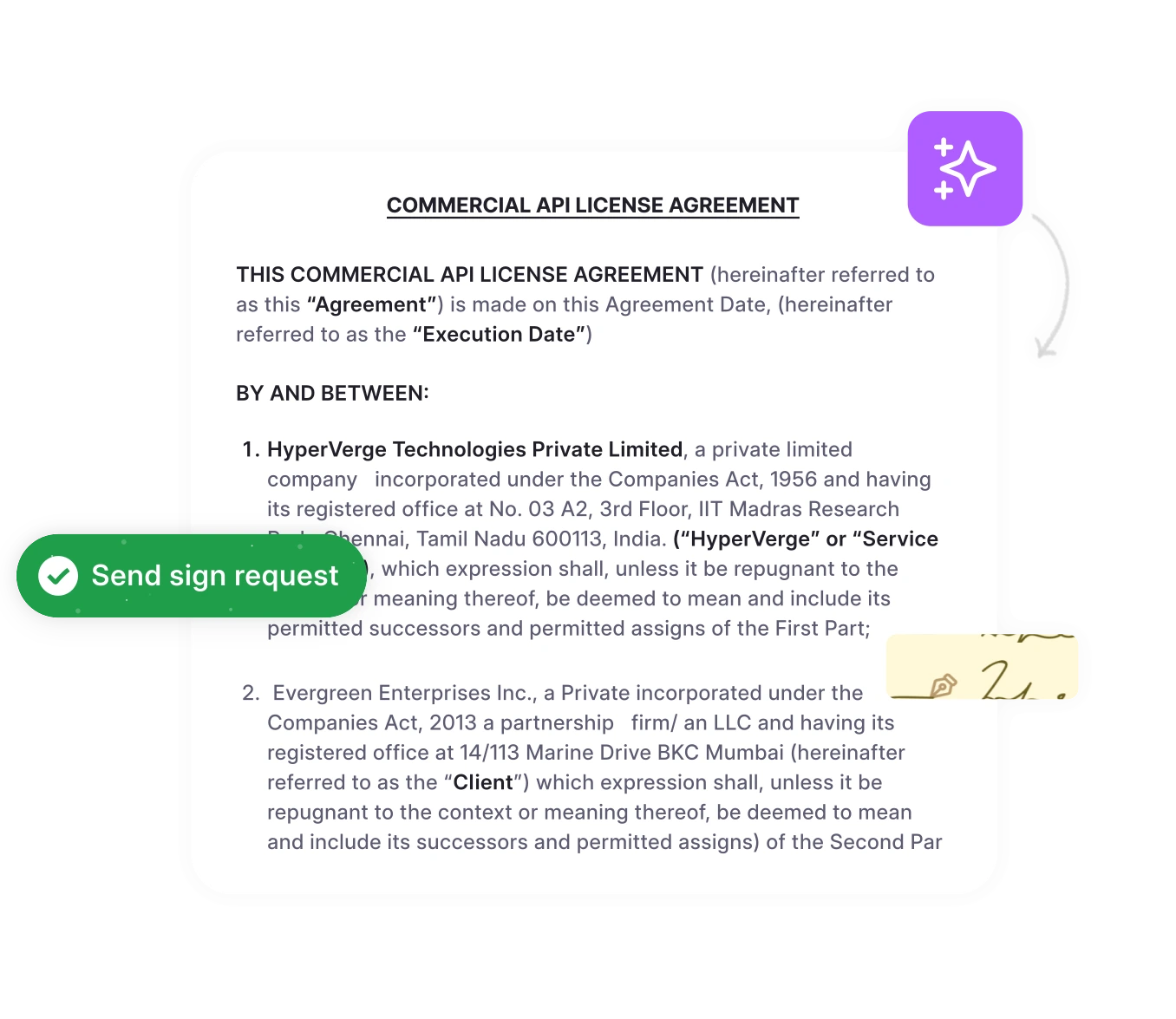As legal tech continues to evolve, in-house counsel and law firms alike are exploring smarter ways to manage growing workloads without compromising quality or compliance. AI-powered contract drafting is leading that shift.
For legal professionals looking to increase the speed of billable work, streamline collaboration, and handle contracting at scale, AI contract drafting is the practical solution.
Instead of spending valuable time on repetitive tasks, AI can help in generating first drafts, suggesting compliant clauses, and flagging potential risks, all in minutes. It empowers legal teams to stay compliant, reduce risk without losing human control.
In this blog, we’ll break down:
- How legal teams are using AI to write legal contracts smarter and faster
- Specific benefits you can expect from integrating AI into your contract management process
- How modern CLM platforms ensure the process stays safe, strategic, and fully lawyer-controlled
Can legal teams use AI for drafting contracts?
Legal teams can use AI for drafting contracts, and many already are.
Today’s AI-powered contract drafting tools enable them to draft contracts faster, minimize errors, and maintain consistency across agreements.
Instead of spending hours manually redrafting routine contracts, legal professionals now use AI to:
- Generate tailored first drafts
- Suggest pre-approved compliant clauses
- Flag risky or missing terms all in a fraction of the time
In this new workflow, AI contract drafting acts as a support system rather than a replacement for human expertise.
It manages routine tasks and time-consuming activities, allowing lawyers to focus on complex contracts, negotiation, legal enforceability, and compliance checks where human judgment is crucial.
Platforms like HyperStart are leading the way, blending artificial intelligence and natural language processing into contract lifecycle management (CLM) workflows. With features like smart templates, real-time clause suggestions, and auto-filled fields, AI helps legal teams move faster without sacrificing precision or compliance.
However, while AI can speed up the first 80% of the drafting journey, final reviews, negotiations, and high-risk assessments still require a lawyer’s insight, especially when multiple parties are involved and have unique needs or when working on customized or high-value agreements.
Now that we understand how AI fits into contract workflows and automates contract drafting, let’s break down the specific ways it transforms contract drafting.
6 benefits of using AI in contract drafting
AI-driven platforms don’t just help generate contracts faster, they also help legal teams review contracts more thoroughly.
1. Draft contracts in minutes with AI assistance
Traditionally, drafting a contract meant starting from scratch or finding an old version and manually editing it. That process is not only time-consuming but also prone to human error.
With AI-powered contract drafting, once a contract request comes in, say, from sales or procurement, the system can generate a tailored draft almost instantly. It pulls from approved legal contract templates, auto fills fields like party names, dates, and jurisdiction, minimizing risks and ensuring consistency across large volumes of contracts.
Result: Faster turnaround, fewer mistakes, and major time savings.
2. Get pre-approved clauses when you need them
When writing or reviewing a contract, legal teams often refer to past documents or policies to find the right wording for specific clauses. This can take time and may still result in inconsistencies.
An AI contract drafting solution can analyze the type of contract you’re working on and even detect the specific section to suggest clauses that align with your organization’s standards or legal preferences. These suggestions are based on previously approved language, internal rules, relevant laws, or even industry best practices.
3. Standardize contract language across departments
In large organizations, different teams might use different versions of the same type of contract. Sales might have one version of a vendor agreement, procurement another, and legal a third, often with conflicting or outdated language.
AI helps legal teams centralize templates and maintain standardized, up-to-date contract language across the contract lifecycle. It ensures that no matter who initiates the contract or from which department, the wording is aligned with the language your organization prefers.
4. Helps spot risk early
Beyond drafting, AI also supports risk assessment during the contract review phase. It flags potential issues like:
- Missing mandatory clauses (like termination or confidentiality)
- Use of risky terms or vague language (especially in indemnity, liability, or data protection sections)
- Jurisdiction choices that don’t align with internal policies
5. Frees up legal teams for strategic work
Legal teams are often overrun with low-complexity, high-volume work, redrafting NDAs, reviewing basic vendor terms, rewording clauses, etc. This repetitive work eats into time better spent advising on business strategy, negotiating high-value deals, or handling regulatory issues.
By automating the initial contract generation process, AI allows legal professionals to focus on where their expertise is most needed.
The shift is subtle but powerful: from manual contract drafters to strategic advisors who are looped in only when their insight truly adds value.
AI is best used for repeatable routine work like:
- Translating language
- Summarizing contract data and history
- Complementing benchmark approval workflows
6. Makes it easier to collaborate across teams
Many non-legal departments see legal as a bottleneck during the contract lifecycle.
AI helps solve that by letting non-legal teams (like Sales, HR, or Procurement) create a contract using a structured intake form. Based on their inputs, the AI generates a draft that’s already in line with legal preferences.
Legal then steps in only at the right time, typically at the review or approval stage, instead of being bogged down with drafting every single agreement.
- Faster turnaround times
- Fewer back-and-forths
- Better alignment between departments
Let’s look at real-world examples across law firms, in-house teams, and modern CLM platforms.
Tired of playing ‘Spot The Difference’ with contract versions?
HyperStart CLM compares redlined documents side by side, flags risky edits, and helps you finalize faster with zero confusion.
Book a DemoHow legal teams are using AI to draft contracts
Legal teams across the legal industry are actively using AI-powered tools to improve their workflows. Here’s how:
1. First-draft automation at law firms
Many law firms are using AI to handle the grunt work of first drafts. Rather than starting with a blank document, lawyers can pull in precedent language, suggest clauses based on client preferences, and create complete drafts within minutes.
For firms dealing with high volumes of similar agreements, like vendor contracts or NDAs, this helps cut timelines without cutting corners.
Result: Lawyers focus more on negotiation strategy and less on repetitive writing.
2. In-house legal teams relying on AI for everyday contracts
In-house legal teams often juggle multiple requests from across departments. AI helps them handle this load efficiently, especially for standard agreements like:
Instead of having to write these from scratch or constantly edit old versions, AI can generate the latest, approved language automatically.
Result: Faster turnaround, fewer drafting errors, and better bandwidth for legal teams.
3. CLM tools like HyperStart embed AI into the drafting process
Modern contract lifecycle management platforms like HyperStart take it one step further. They embed AI directly into your drafting workflows so legal users don’t have to switch tools or lose control.
Here’s what this looks like in practice:
- Smart clause suggestions using large language models
- Guided templates based on business inputs
- Compliance checks against internal playbooks and external regulations
- Real-time collaboration features within Microsoft Word integrations
4. Lawyers stay in control with less manual work
What makes AI truly effective is that it doesn’t remove lawyers from the process; it just reduces the time spent on low-impact tasks.
- AI handles the repetition.
- Lawyers handle the nuance.
This balance is what makes AI a safe, scalable way to support contract approval workflows without compromising legal oversight.
Result: Lawyers act as high-value advisors, not document editors.
Responsibly using it involves understanding its limitations and focusing on where it can complement you without replacing your core competencies.
- Edge cases: AI falls short of dealing with unusual, rare, or exceptional situations that are better represented by a lawyer
- Data quality: AI models are not immune to a lack of quality, inaccuracy, and bias that may have entered them from previous inputs
- Limited domain expertise: They still lack depth of knowledge, leading to superficial and incorrect information. Only a lawyer can offer deeper critical insights and shape legal arguments that are trustworthy.
Now that we’ve seen how legal teams are putting AI into practice, let’s explore how contract lifecycle management platforms help implement these capabilities in a secure, structured, and legally sound way.
How CLM platforms help implement safe, AI-driven contract drafting
Here’s how a contract review software like HyperStart helps legal teams implement safe, AI-driven contract drafting:
1. Use pre-approved template libraries to draft contracts faster
HyperStart’s AI doesn’t invent new language from scratch, it draws from a centralized repository of pre-approved clauses.
This ensures:
- Every draft aligns with company policies
- Regulatory and compliance standards are automatically met
- Business risk is minimized from the first draft
2. Set up approval workflows to keep legal in control
Business teams (like Sales or HR) initiate contracts using simple forms. AI generates the draft. But no contract goes out the door until the legal team signs off. Business teams get speed; legal teams keep control.
Result: Business moves fast, but legal keeps full oversight and control.
3. Track every edit with full audit trails and version control
Every clause edit, every approval, and every AI-generated suggestion is logged automatically with timestamps and user IDs. In case of audits, disputes, or compliance checks, you have a full, unbreakable history.
4. Let AI handle routine drafting while lawyers focus on strategy
Integrated deeply, AI assists across every stage of the contract lifecycle.
- Clause Suggestions: Based on contract type, location, and company standards.
- Auto-Fill Fields: Instantly populate names, dates, prices—minimizing human error.
- Simplify Legal Jargon: AI helps translate dense legalese into plain English for business teams.
- Smart Redlining: AI flags risky third-party contract clauses against your internal playbook.
5. Automate low-value tasks without sacrificing legal judgment
When drafting a Master Services Agreement, HyperStart uses AI to:
- Match each clause position with pre-approved language
- Generate summaries and flag risky terms via redlining in Word
- Initiate the approval process with structured intake forms
- Stay in control of versions and watch audit trails
- Collaborate across Slack, Word, or email
With contract management software like HyperStart, you can automate routine tasks, standardize contract language, and maintain full legal oversight throughout the contract lifecycle.
Ready to see how it works in practice?
Book a demo and explore how HyperStart can streamline your contract workflows with AI.
Frequently asked questions
But legal teams must always review the final draft, as AI doesn’t fully understand context, complex legal nuances, or specific business risks. In other words, AI is a powerful assistant, but the legal professional is still the decision-maker.
AI-driven contract drafting takes traditional templates to the next level by:












